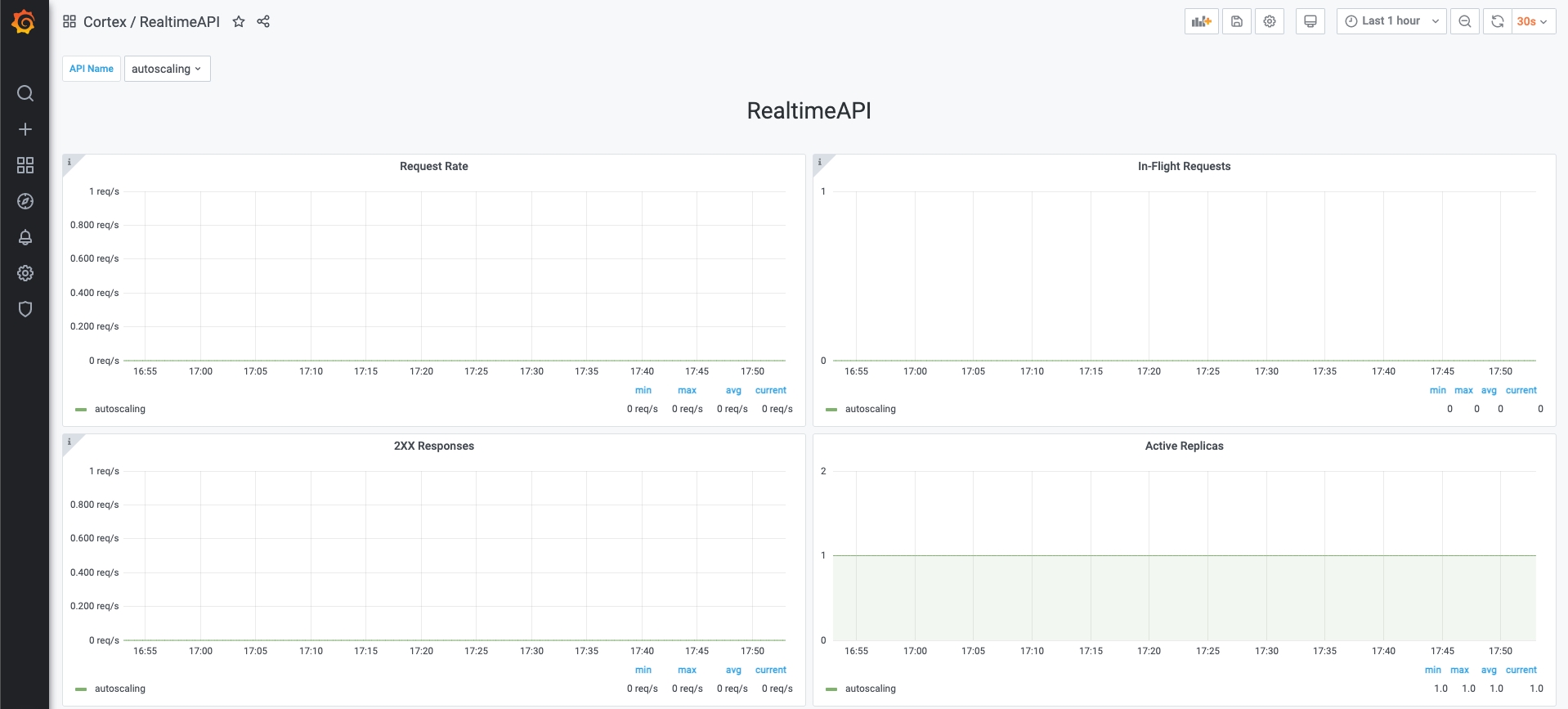Metrics
The cortex get and cortex get API_NAME commands display the request time (averaged over the past 2 weeks) and response code counts (summed over the past 2 weeks) for your APIs:
cortex get
env api status up-to-date requested last update avg request 2XX
aws iris-classifier live 1 1 17m 24ms 1223
aws text-generator live 1 1 8m 180ms 433
aws image-classifier-resnet50 live 2 2 1h 32ms 1121126The cortex get API_NAME command also provides a link to a Grafana dashboard:

Metrics in the dashboard
Panel
Description
Note
Request Rate
Request rate, computed over every minute, of an API
In Flight Request
Active in-flight requests for an API.
In-flight requests are recorded every 10 seconds, which will correspond to the minimum resolution.
Active Replicas
Active replicas for an API
2XX Responses
Request rate, computed over a minute, for responses with status code 2XX of an API
4XX Responses
Request rate, computed over a minute, for responses with status code 4XX of an API
5XX Responses
Request rate, computed over a minute, for responses with status code 5XX of an API
p99 Latency
99th percentile latency, computed over a minute, for an API
Value might not be accurate because the histogram buckets are not dynamically set.
p90 Latency
90th percentile latency, computed over a minute, for an API
Value might not be accurate because the histogram buckets are not dynamically set.
p50 Latency
50th percentile latency, computed over a minute, for an API
Value might not be accurate because the histogram buckets are not dynamically set.
Average Latency
Average latency, computed over a minute, for an API
Custom user metrics
It is possible to export custom user metrics by adding the metrics_client argument to the predictor constructor. Below there is an example of how to use the metrics client with the PythonPredictor type. The implementation would be similar to other predictor types.
Refer to the observability documentation for more information on custom metrics.
Note: The metrics client uses the UDP protocol to push metrics, to be fault tolerant, so if it fails during a metrics push there is no exception thrown.
Last updated